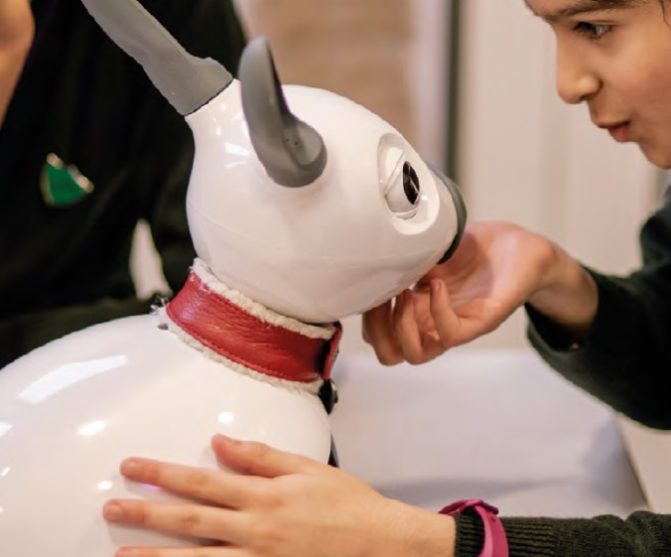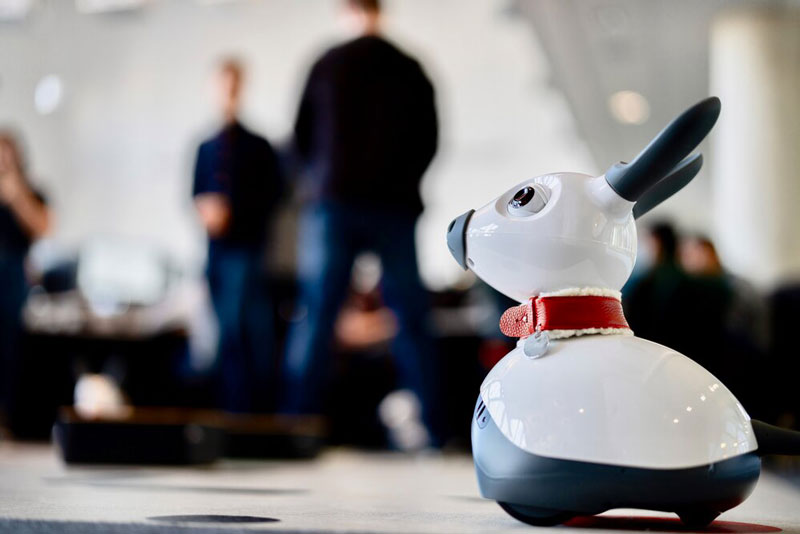Intelligent Humanoid Robot That Can Interact and Entertain
Modern social robots employ a range of analogue sensors to communicate with humans, with the inputs being translated to digital data that the robot’s programming can understand. Artificial senses and outwardly perceptible responses, with the latter being mediated by artificial intelligence, which is the product of all protocols by which they are designed to process and respond to data received and memories stored, can be broadly divided into artificial senses and outwardly perceptible responses.
MiRo-E is a character made up of a vast range of sensors, motors, and software controlled by a breakthrough brain-based control system, the product of a unique blend of mechanical engineering and software.
MiRo’s mechatronics and software are completely re-engineered to build a perfect companion that has been evolved for education, based on expertise from our MiRo-B, which is being utilized by academics and developers in universities all over the world.


Moving
MiRo-E can move and interact with the surroundings since it has 11 degrees of freedom and an animal-like form. MiRo’s range of neck and head movements allows for exceptional eye contact and interaction with users. The multiple ranges of motion allow the user to fully immerse into the character that MiRo-E is. It also enables the user to programme MiRo-E for a variety of activities and actions
Feeling
MiRo’s head and torso are covered in touch sensors, as well as sonar, light, and cliff sensors, which enable MiRo to view and perceive the environment as well as interact with the humans (and animals) in it. With its cutting edge sensors, MiRo-E processes data and enables self preservation. The sensors act as inputs for the robot, while outputs can be programmed by the users themselves.
Thinking
MiRo’s animal-like behavior is the result of years of study into biomimetic robot behavior, and its brain-based controller produces a brilliant organic thought process behind each action/response, allowing for natural interactions. You will find yourself wondering if the robot were actually thinking for themself, due to the thought process built organically with years of study.
Observing
MiRo-E is fitted with two cameras that capture high-resolution images of the environment, allowing him to detect and recognise faces, forms, and objects in real time. This enables MiRo-E to identify and differentiate between visual inputs. Recognising faces also helps it segment different memories and actions for the particular face the robot is observing.
Speaking
MiRo-E utilizes a loudspeaker to transmit its feelings to the world, using a pleasant voice pattern created by imitating mammalian vocal chords. Taking the real-like feel a notch further, the voice emanating from the robot is designed to sound organic. This brings a sense of reality to MiRo-E being an independent organic animal.
Hearing
MiRo-E features two directional microphones in each ear (which spin like rabbits) so that MiRo may respond to any sounds in a natural manner, such as speaking or clapping. MiRo’s tail also has a third microphone to aid with sound localization!

MiRo-E allows learners to acquire teamwork, problem-solving, and AI coding abilities while learning and expanding their knowledge and imagination through robotics and technology. The one-of-a-kind educational programme allows you to test and simulate your student’s code in real time using a web browser.
For students, educators, researchers, and developers in the USA,UK and the UAE, the newly developed MiRo-E is a highly specified, low-cost, adaptable, autonomous, and completely programmable robotic platform. MiRo is being used by universities and colleges all around the world including frontier cities such as Dubai, the GCC and the rest of the Middle East, as a platform for robotics and artificial intelligence research and education.






Recent Comments